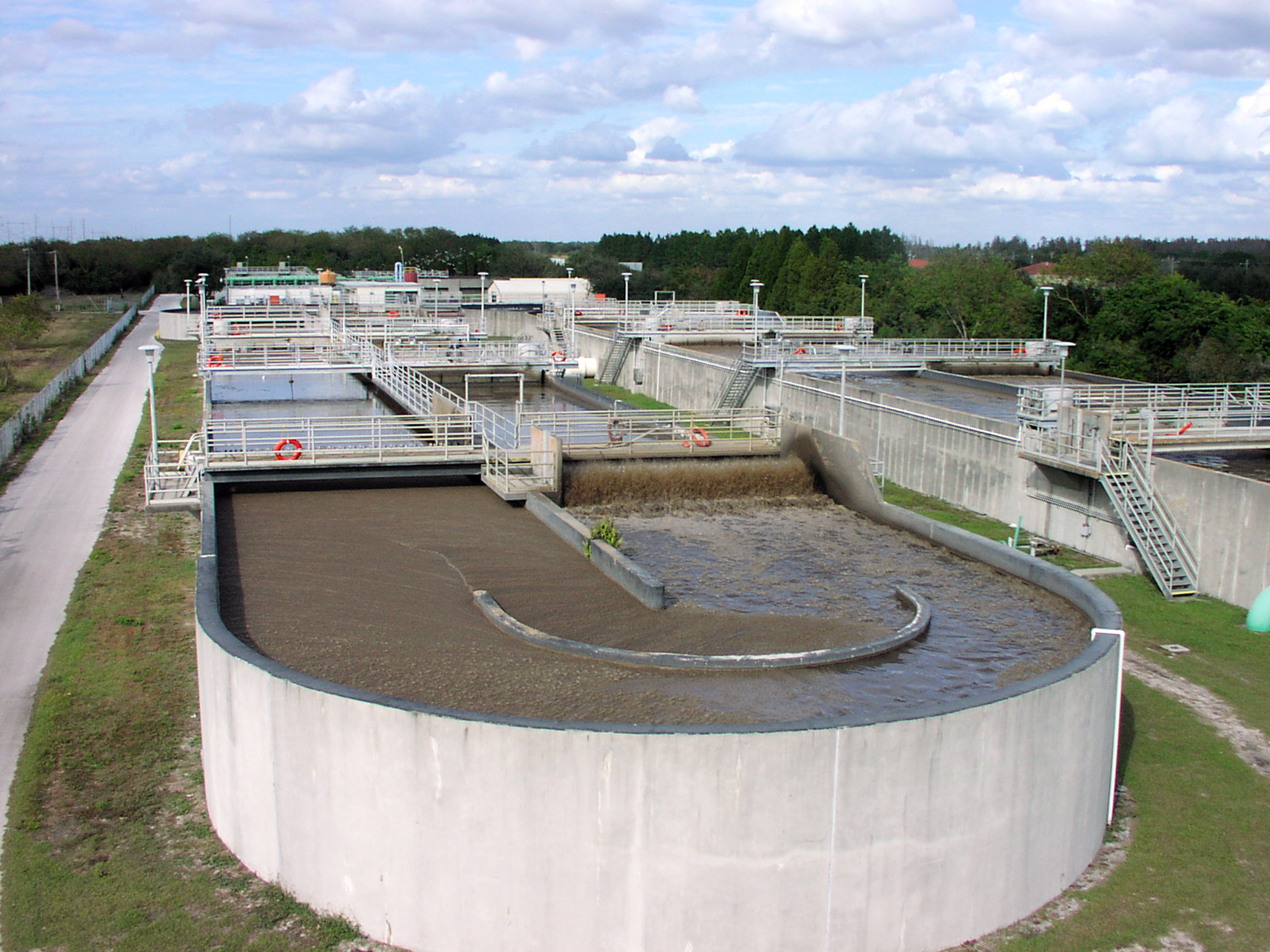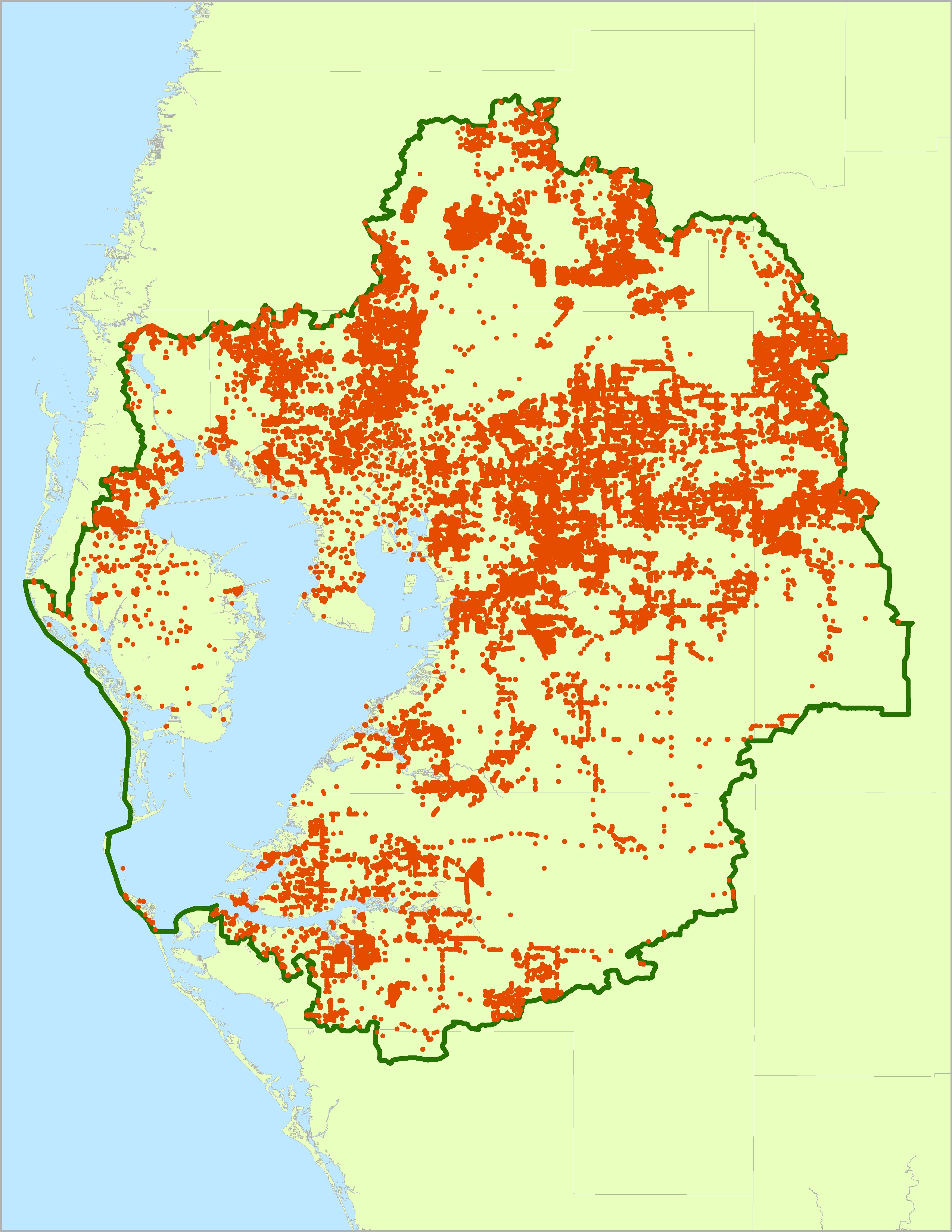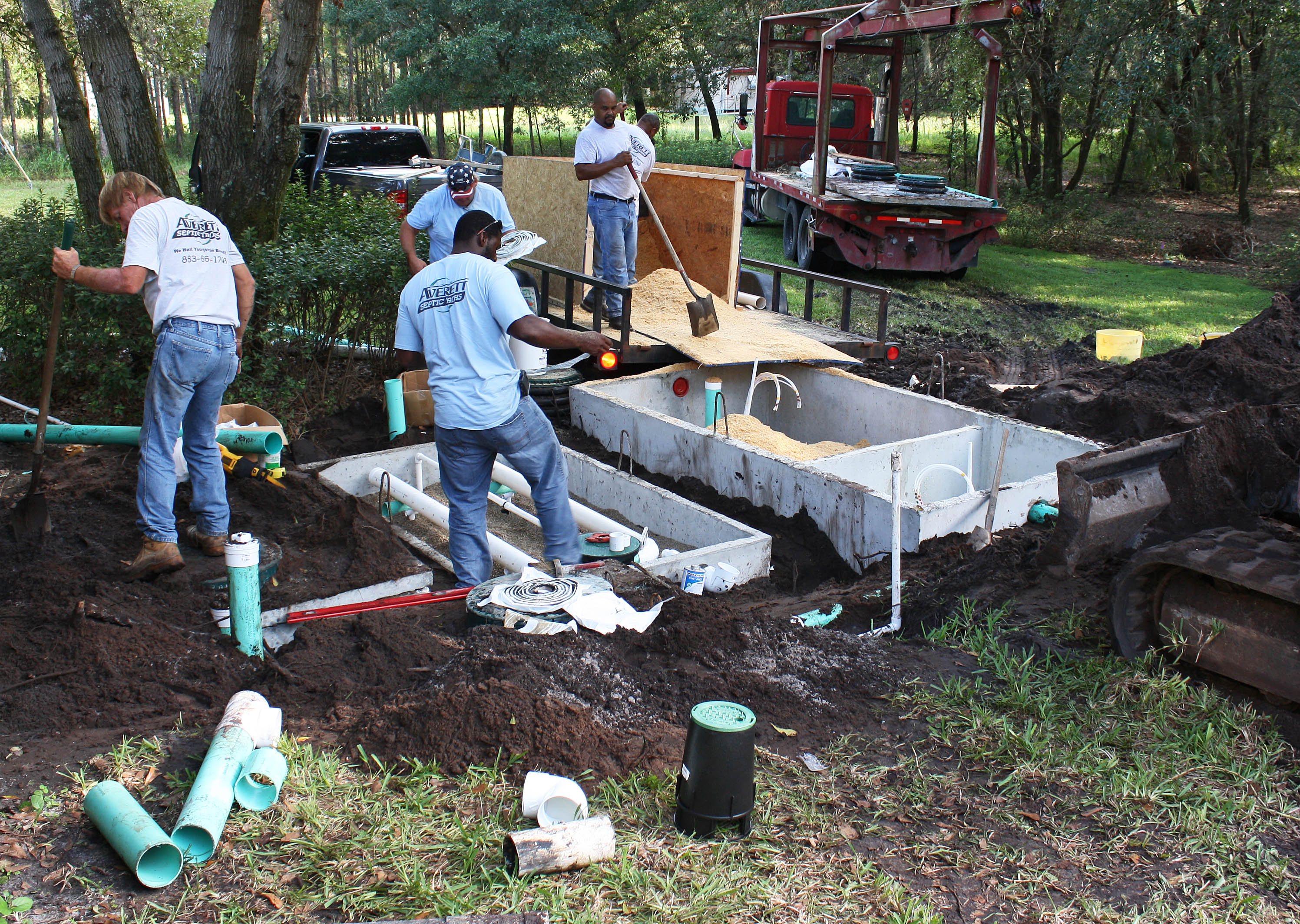WW-2
Extend central sewer service to priority areas now served by septic systems
OBJECTIVES:
Identify and prioritize hotspots of nutrient and bacteria contamination from septic tanks and small package plants, and convert to central sewer as opportunities arise. Develop nitrogen loading estimates for septic systems in the Tampa Bay area. Support adoption of new septic system nitrogen reduction technology and requirements for regular maintenance and inspection.
STATUS:
Ongoing. Local municipal partners have mapped septic systems and made progress extending central sewer and converting septic systems strategically and opportunistically with land development. The Basin Area Management Action Plan (BMAP) process has helped identify hotspots and develop strategies to reduce bacterial loading (see Action PH-4).
BACKGROUND:
Overall, bay-wide nitrogen loadings from septic systems are minor when compared to other sources, such as stormwater and air pollution (see Action WQ-1). A 1995 study estimated the total nitrogen loading to the bay from septic systems at 220 tons/yr, about 5% of the total (Ayres Associates 1995). A 2016 study of septic systems located within 200 meters of a waterbody within the ungaged basins of Tampa Bay estimated 4,666 septic systems contribute 40 tons of TN per year with 32% of the load flowing to Hillsborough Bay and 28% flowing to Manatee River (Janicki Environmental 2016).

While nitrogen loading from septic systems is a concern, so are other chemicals including phosphates and “emerging contaminants” such as pharmaceuticals, personal care products, and microplastics (see Action COC-4), and bacterial pollution (see Action PH-4). Failed septic systems in residential or rural areas can contribute large numbers of coliform and other bacteria to surface and groundwater, especially in areas with large concentrations of older septic systems more prone to malfunctioning. Poorly maintained package plants (small privately owned wastewater treatment plants (WWTPs) are also of concern. Over the last decade, several of these have been closed and wastewater flow consolidated with larger, more efficient municipal WWTPs.
Based on permit data from the Florida Department of Health (FDOH), there may be as many as 250,000 septic systems in the four coastal counties of the bay area, almost half built before 1970. For many years, new developments within Urban Service Areas have been required to hook up to central sewer, and expansion of Urban Service Areas over time has facilitated conversion of additional properties to central sewer. Even so, thousands of new permits for septic systems have been issued in the last decade. FDOH’s 2016 state-wide Florida Water Management Inventory (Ursin 2016) documents and maps the wastewater treatment method and the drinking water source for the more than 6 million improved parcels in the state. The study documented that in the three counties surrounding the bay, about 117,000 parcels have or likely have septic systems. This estimate does not include the portion of Pasco County within the bay watershed. More than half of all parcels in Pasco are on septic. Pinellas County has the fewest parcels served by septic systems (15,000 or 3.6%).

Local government partners have basic inventories and maps of septic systems, and all have made good to substantial progress in converting septic systems to central sewer. Pinellas and Hillsborough counties and the cities of Clearwater, Largo, St. Petersburg, Tampa and Lakeland all have ongoing projects to convert more septic systems to central sewer as opportunities arise. Projects are tracked in the Action Plan Database of the Tampa Bay Nitrogen Management Consortium (see Action WQ-1). Challenges remain with regard to central sewer expansion funding, cross-jurisdictional coordination, and delays in homeowner and businesses conversions due to costs and other factors.
Conversion from septic to sewer service can be costly, with residential hookup fees ranging anywhere from $2,000 to $5,000 or more. This underscores the need for financing options such as interest-free loans and cost-sharing grants to assist residents who may have limited ability to pay. Additionally, availability of central sewer service may encourage higher density development in environmentally sensitive areas, an issue local governments must consider in their long-term planning. Without adequate user fees, local governments must bear the costs of additional operating capacity for their wastewater treatment plants.
Measures to address septic system sources of pollution have been developed through Basin Management Action Plans (BMAPs). BMAPs identify various sources of potential pollution related to a specific Total Maximum Daily Load (TMDL), their relative contributions, additional research or monitoring needs and strategies to achieve TMDL reductions. Projects include high-probability septic system failure mapping (based on a number of criteria, including density, plat age, proximity to a water body, soil type and texture, seasonal high-water table, repair records and proximity to central sewer), microbial and deoxyribonucleic acid (DNA) source identification, septic system complaint response and septic system setbacks.
While Florida law requires a 75-foot septic system setback from wells and surface waters, Manatee County implemented countywide requirements that mandate a 400-foot setback from waterways for new septic systems, encompassing freshwater, marine and tidal waters. If this setback is not feasible, then performance-based standards providing Advanced Wastewater Treatment (including additional nutrient removal capacity) must be achieved by the septic system. Hillsborough County also requires stricter setbacks as part of its wellfield protection buffers.

In 2015, FDOH completed the Florida Onsite Sewage Nitrogen Reduction Strategies Study, providing new methods and options for reducing nitrogen from septic systems in sensitive watersheds where sewers are not feasible. The seven-year project developed and field-tested new septic system designs, including system cost estimates and costs compared with existing systems. Systems were installed and tested at residential homes across the state, including a site in Hillsborough County.
The project also developed a nitrogen fate and transport model to estimate nitrogen contribution from septic systems in shallow aquifers. The Tampa Bay Estuary Program (TBEP) does not specifically quantify nitrogen loadings from septic tanks in overall watershed estimates; they are potentially captured as a part of non-point source and groundwater estimates. This is a future priority of the Nitrogen Management Consortium.
As of July 1, 2023, State legislation mandated that enhanced nutrient-reducing septic systems are required within watersheds with established nutrient TMDLs and BMAPs, and where central sewer service is unavailable. Regular inspections for septic systems near wells and surface waters remain an important issue to be addressed, potentially as initiatives arise as a result of the 2020 Clean Waterways Act, which transferred responsibility for implementing the Florida Statutes and regulations applicable to OSTDS to the Florida Department of Environmental Protection.
Locally, city and county permits issued through the National Pollutant Discharge Elimination System (NPDES) offer a mechanism for addressing chronic failures of septic systems and package plants. Local Land Development Codes may also address problem areas with repeated failures of septic systems.